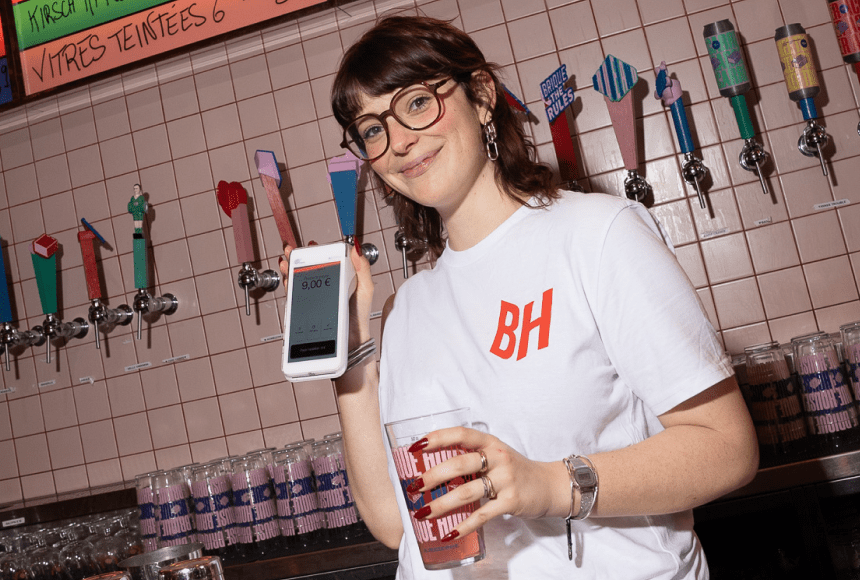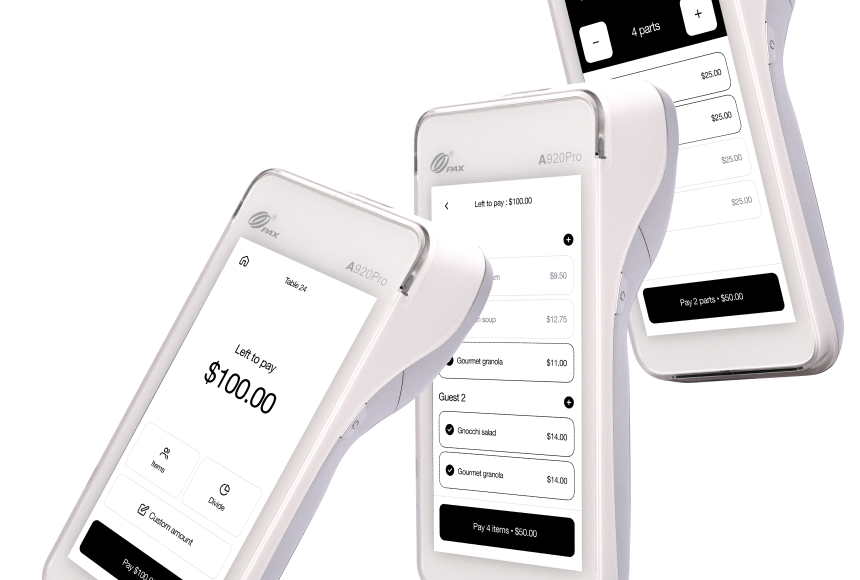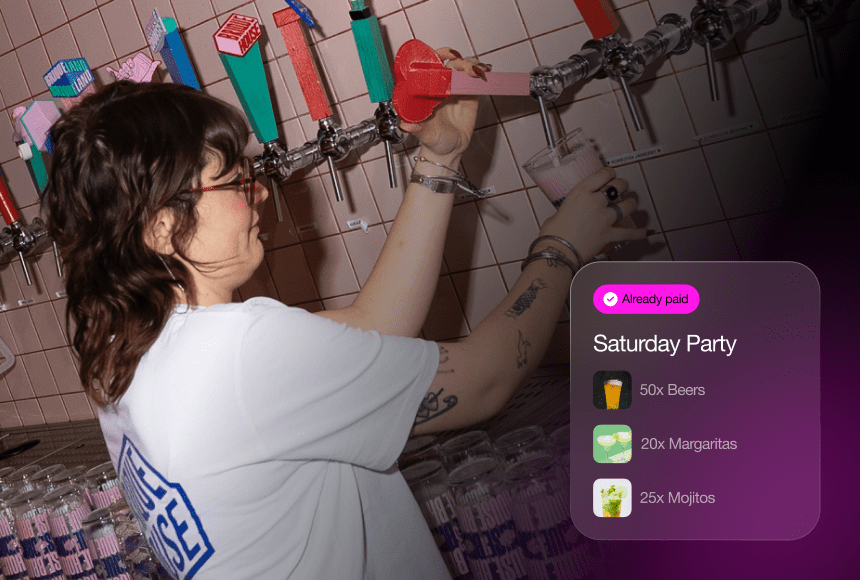
Is Your Outdated Payment Terminal Ready for the Black Friday Onslaught?
Black Friday in the Restaurant Business: A Surging Tide of Customers
When you think of Black Friday, you likely picture massive lines outside big-box retailers or e-commerce websites offering round-the-clock flash sales. But for restaurants, Black Friday can be just as critical—if not more. After all, many shoppers need to recharge between store visits, and some prefer to take advantage of special holiday menus and promotions. According to the National Retail Federation (NRF), roughly 196.7 million Americans shopped in-store or online during the five-day period from Thanksgiving Day through Cyber Monday in 2022. Plenty of those shoppers, exhausted after a marathon of deals, ended up at restaurants to refuel.
The upshot? This time of year isn’t just about selling more burgers or lattes—it’s about delivering faster service, ensuring a seamless payment experience, and providing that extra warmth people crave during the holiday hustle. The question is, can your current payment terminal—and the rest of your checkout process—keep pace with the rush?
Why Old Payment Terminals Fall Short
The classic countertop card reader has served you well so far. It’s done the job, and you’ve avoided the hassle of shopping for an upgrade. Yet if there’s any day that will test the limits of your hardware and software, it’s Black Friday. Here are some reasons why outdated payment terminals just don’t cut it in today’s ultra-competitive restaurant scene:
- Slow transaction speeds: Every second counts when you have a packed waiting area. Staring at a blinking screen while it processes a payment can feel like an eternity to your hungry guests.
- Limited payment options: Older terminals often aren’t built for contactless transactions, smartphone payments, or secure QR codes. In a world where more people pay with a tap or a scan, restricting their options can lead to quick frustration.
- Security vulnerabilities: As cyber threats continue to evolve, older devices become prime targets for breaches. Data encryption standards have moved on, and that leaves you exposed to potential compliance issues.
- Frequent breakdowns: The repeated use of older terminals can cause hardware failures at the worst possible times—like the middle of your Friday dinner rush.
An outdated terminal isn’t merely a mild inconvenience; it’s a ticking time bomb. On regular business days, you might be able to get away with slower speeds or a finicky card reader. But on Black Friday, the stakes are far higher, and the margin for error is vanishingly small. That is exactly why modernizing your setup can feel urgent—because it is.
The True Cost of Slow Checkouts
You know that long line of customers that forms at peak hours? It might look like an indicator of success. But in reality, a slow-moving line is a surefire way to drive away impatient diners. According to certain industry reports, American consumers aren’t too fond of waiting—many will bail if they see a line that might cost them more than a few minutes. And it’s not just about the single transaction you lose; it’s the ripple effect.
- Negative brand perception: Guests who have to wait too long could vent their frustration on social media or leave poor online reviews—unfortunate, especially when you want that holiday foot traffic.
- Staff burnout: A stressed-out team under the pressure of the holiday crowd could result in more mistakes, like wrong orders or mis-charges, further slowing down the line.
- Lost tips: If the checkout process is confusing or irritating, diners may feel less inclined to reward the staff with a generous tip—hurting morale and your bottom line.
- Reduced table turnover: In full-service restaurants, the time it takes to close out checks and seat new diners directly impacts how many guests you can serve in an evening.
Now multiply these headaches by ten on Black Friday. You might love seeing your dining room packed, but the hidden costs of outdated terminals suddenly feel a lot less tolerable. So while you might be tempted to save a few bucks by holding on to your older hardware, the long-term losses—in brand reputation, repeat business, and staff satisfaction—can be monumental.
How to Tell Your Current Payment Terminal Is on Its Last Legs
Over time, you may have grown accustomed to your terminal’s quirks—like how it sometimes needs a gentle tap on the side to start up, or how it randomly reboots if left idle for too long. But consider these early warning signs that your device could fail you faster than you think:
- Frequent error codes: If your machine interrupts transactions with cryptic messages, it’s a sign that your software may no longer be adequately supported or updated.
- Glitches during peak hours: Notice that your system slows down or stalls entirely when traffic is at its highest? That’s a recipe for chaos on Black Friday.
- Inconsistent connectivity: Does your terminal disconnect from your Wi-Fi or network at random? If customers have to wait to re-run their payment, they’ll get frustrated quickly.
- Security prompts: If you’re being repeatedly warned that your software version isn’t PCI-compliant or missing crucial updates, it’s only a matter of time before an upgrade becomes mandatory.
When you see these red flags appearing more frequently, it’s time to take action. Black Friday isn’t the day to experiment with band-aid fixes—even if your device worked last year, it might not be as lucky this time around.
What Modern Payment Solutions Bring to the Table
Upgrading your terminal is about more than shiny new hardware—it’s an opportunity to streamline workflows, offer better experiences, and even gather data you can use to drive future promotions. Here’s what you gain when you opt for a cutting-edge solution:
- Contactless and digital payment options: Many modern devices accept tap-to-pay credit cards, digital wallets like Apple Pay or Google Pay, and emerging methods that rely on QR codes. Shaving off a few seconds per transaction can add up to huge time savings on a busy night.
- Enhanced security: Advanced encryption and other security features help keep customer data safe, reducing the risk of costly data breaches and preserving trust.
- Faster processing: Streamlined hardware and updated software can handle high-volume transactions without choking, so you’re ready for the heaviest rush hours.
- Integrated tipping systems: In the US, tipping is a crucial part of restaurant culture. Modern payment setups make adding a tip intuitive—especially if they’re combined with options like QR code technology from solutions such as sunday. Customers can add a tip in seconds right on their phone.
- Real-time analytics: Today’s terminals often tie in with your point-of-sale (POS) system to deliver immediate reports on daily sales, customer trends, and staff performance. This helps you pivot more effectively when you sense an uptick in readouts—time to staff up or adjust the menu, for instance.
These features aim to make the checkout process less of a bottleneck and more of a competitive advantage. Faster checkouts mean you can cycle through more happy customers, your staff can focus on what they do best, and your overall productivity skyrockets when it matters most.
Planning Your Upgrade: Steps to Avoid Holiday Chaos
Migrating to a new payment solution might feel daunting, particularly if you’re already juggling myriad responsibilities ahead of Black Friday. The good news? It doesn’t have to be complicated. Consider the following steps if you’re serious about avoiding a meltdown:
- Evaluate your current setup: Make a list of payment functions you need, from tip integration to gift cards. Identify where your old terminal falls short.
- Research reliable providers: Look for companies offering robust encryption, intuitive interfaces, and seamless integration with your existing POS. Ask fellow restaurateurs for their recommendations—there’s nothing like real-world feedback to guide you.
- Plan for training: An advanced terminal or QR code solution can fail if your staff doesn’t know how to use it. Schedule dedicated time to walk them through the new interface and address any questions.
- Test during a smaller rush: Before the biggest day of the year, run the new solution under moderate pressure. That might mean a weekend night or a local event to see how the system handles spikes in traffic.
- Secure reliable internet: Most modern solutions rely on stable Wi-Fi or a wired connection to function smoothly. If your internet is spotty, consider upgrading your router or bandwidth, and have a backup (like a mobile hotspot) on standby.
By mapping out an upgrade path and implementing changes in stages, you’re far more likely to avoid unpleasant surprises. This proactive approach also gives you a chance to gather feedback from staff and customers—fine-tuning your process before the real storm hits.
A Quick Case Study: Jessica’s Seafood Grill
Sometimes, it helps to see how this can play out in a real scenario. Jessica owns a coastal restaurant, Jessica’s Seafood Grill, that experiences an uptick in traffic around Black Friday weekend. Customers often stop by for a classic seafood feast after a day of retail mania. For years, Jessica’s had used the same outdated payment terminal she leased when she first opened the business.
Last November, she reached her breaking point: The lines at her checkout kept growing, frustrated diners walked off without paying (or even ordering), and staff morale tanked. Determined not to repeat that experience, Jessica upgraded to a modern POS that integrated seamlessly with a new, faster payment terminal.
She also embraced an easy-pay QR code system—very much like the one sunday offers—allowing diners to view their check, tip, and pay right from their smartphones. The result? Customers appreciated the convenience of not having to flag down a server to pay. The line at the front became nonexistent. Not only did she see higher tips, but she also received glowing reviews and even earned repeat customers who commended the quick, hassle-free checkout. That single technology shift had a ripple effect: fewer frustrated guests, more time for her staff to provide top-notch service, and a surge in weekend revenue.
The Hidden Perks of Modernizing Early
Beyond surviving the rush, upgrading your terminal or adopting new payment technologies has longer-term benefits that can transform how you run your restaurant:
- Improved reputation: Tech-savvy diners notice when you offer modern conveniences, and it contributes to a perception that you care about their overall experience.
- Loyalty program integration: Some cutting-edge solutions let you automatically prompt customers to join your loyalty program or sign up for special offers right after they pay.
- Upselling opportunities: If your terminal integrates with your menu system, you can display specials or promotional items as customers check out—a subtle yet effective nudge.
- Labor efficiency: With a streamlined terminal, your staff can handle more tasks in less time. Devices that handle splits, tips, and receipts quickly reduce the friction between your team and the customers.
- Future-proofing: As more features roll out—whether it’s invoice automation or advanced analytics—you’ll be in a prime position to take advantage without major overhauls.
One of the biggest mistakes some restaurant owners make is waiting until a meltdown happens—like on Black Friday—before they upgrade. By planning ahead, you’ll not only sidestep short-term chaos but also position your business for steady growth.
Bringing It All Together
When the busiest shopping day of the year arrives, you want to be more than just “open for business.” You want your restaurant to be the place customers remember for its efficient service, friendly atmosphere, and simple checkout. An outdated device could turn your dining room into a bottleneck and sabotage your bottom line during the most critical weekend of the holiday season.
By anticipating the surge, recognizing the signs that your older device might fail, and embracing modern solutions—from advanced payment terminals to QR-based checkout—you can transform the high-traffic frenzy into a well-managed, profitable opportunity. Your staff will thank you for reducing their stress levels, and your customers will reward you with glowing reviews and extra tips. In the end, the real question isn’t whether you can survive Black Friday, but how you can thrive with the right tools in place.
Frequently Asked Questions (FAQ)
Can I keep my old payment terminal as a backup?
Technically, yes—you can keep it as a fallback if your new system experiences downtime. However, it’s wise to ensure the backup terminal is still compliant with current security standards, and that your staff knows how to use it efficiently. A backup is only helpful if it actually works when you need it most, especially on high-traffic days like Black Friday.
Are the monthly fees for a new payment solution worth it?
Many modern payment providers charge ongoing fees, but these often include transaction processing, software updates, and security enhancements. The higher efficiency, reduced wait times, and better customer experience typically justify the cost, especially if you see more sales and higher customer satisfaction in the long run.
How can I make sure the transition goes smoothly for my staff?
Schedule training sessions during non-peak hours or arrange online tutorials offered by your payment provider. Let your team practice with the new device or QR code system in a low-pressure environment, and consider designating a tech-savvy staff member as point person to assist colleagues who have questions during peak times.
Is my restaurant too small to benefit from advanced payment technology?
No. Smaller establishments can benefit greatly from streamlined transactions and up-to-date security. In fact, small restaurants often rely more on repeat customers and positive word-of-mouth, so speed and convenience can be major differentiators.
What if I can’t afford a top-tier terminal right now?
Look into cost-effective options or talk to terminal providers about financing plans. Investing in an upgraded system pays off when you consider that faster turnarounds and secure transactions can mean more revenue and fewer headaches. Even adopting a QR-based checkout solution is often more budget-friendly than you might think.



